Timing and procedure for cleaning ventilation chambers and air ducts: standards and procedure for cleaning
The ventilation system has a huge impact on human health, since people spend most of their lives in buildings: they live in apartment buildings, work in offices or factories, visit cinemas, museums, and large shopping malls. That is why the cleanliness of ventilation must be closely monitored, and the regulated periods for cleaning ventilation chambers and air ducts must be strictly observed.
In this article, we will consider in detail the regulatory requirements and rules that relate to the procedure for cleaning ventilation systems, the timing and frequency of this work.
The content of the article:
Ventilation Cleaning Laws
Due to the importance of resolving the issue of clean ventilation, a number of laws, GOSTs and regulations have been developed that most clearly regulate the timing, frequency and procedure for cleaning ventilation systems.
Considered fundamental Federal Law No. 52 dated March 30, 1999 “On the sanitary and epidemiological welfare of the population.”
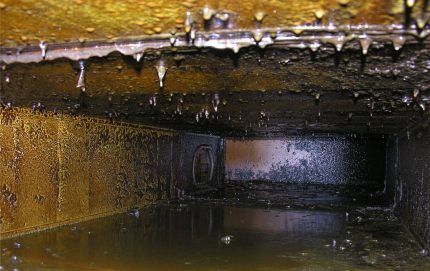
Articles of Federal Law No. 52 concerning ventilation systems regulate the following:
- All citizens (both individuals and individual entrepreneurs and legal entities) have the right to receive information about compliance with the statutory rules and regulations that apply to ventilation systems.The law also obliges them to assist and participate in carrying out work to implement these standards.
- The law defines a range of requirements, the fulfillment of which is mandatory in order to maintain sanitary and epidemiological standards in buildings of all types where crowds of people occur.
- Measures and activities that must be carried out to maintain a healthy indoor environment have been identified.
- The procedure for regulating and monitoring compliance with the cleanliness of ventilation systems by the state is described.
- There is provision for civil liability for violation of sanitary and epidemiological legislation and causing harm as a result.
The second most important document is considered Government Decree No. 390, issued on April 25, 2012 “On the fire regime.”
In the rules of this document, articles on ventilation systems prescribe the following to heads of organizations, owners and renters of premises:
- use ventilation systems only for their intended purpose, prohibiting their dismantling or use for storing any products inside, thereby disrupting their normal functioning;
- clean ventilation using flammable or combustible liquids;
- ensure proper ventilation and carry out cleaning in accordance with established standards.
A separate article (Article 48) defines a number of prohibitions that affect the operation of air ventilation and air conditioning systems.
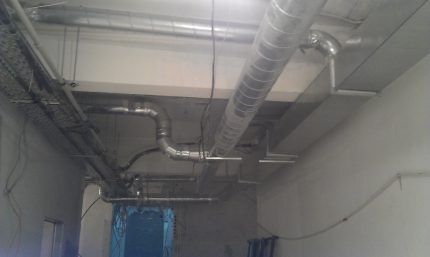
In particular, it is prohibited to cover the ducts, openings or grilles of the hood in any way; make unauthorized connections to the air ducts of gas heating appliances; Clean air ducts from dust, grease and debris using the burning method.
The resolution defines the period for cleaning ventilation systems and the procedure for its implementation:
- cleaning of ventilation systems must be carried out in a fire and explosion-proof manner;
- the head of the organization determines the procedure and timing of work on cleaning filters, ventilation systems, filters and air ducts, but it should not be more than one year;
- the results of the work done must be documented in a document.
These two documents discuss general provisions and requirements for maintaining cleanliness and timely cleaning of ventilation systems. A more in-depth and specific set of rules and regulations is presented in the Order of the Federal State Institution Center for State Sanitary and Epidemiological Surveillance №107 dated August 12, 2004. They will be discussed in the next part of the article.
Rules and stages of cleaning the ventilation system
It is worth noting that, on the basis of Order No. 107, the Resolution of the Chief State Sanitary Doctor was subsequently published, which sets forth requirements for compliance with air exchange standards to maintain a healthy lifestyle.
According to regulatory requirements, cleaning of ventilation plenums and air ducts must be carried out in stages.
The technological cleaning process is structurally divided into four stages:
- Ventilation system inspection in order to determine compliance of sanitary norms with established standards.
- Development of a work plan, determination of the cleaning method and choice of cleaning tactics. Additionally, preparatory work must be carried out.
- Direct cleaning ventilation systems.
- Analysis of the work carried out and evaluation of their effectiveness.
Each of these stages contains its own subparagraphs, the strict implementation of which completely determines the result of the work performed. In this case, the period for cleaning ventilation systems should not exceed 30 days from the date of the scheduled inspection.
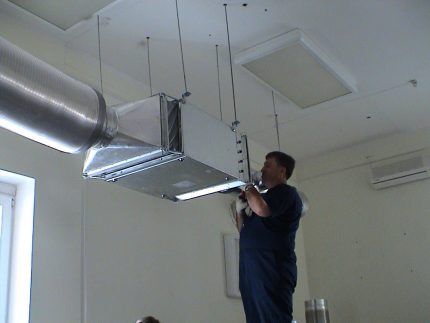
Stage #1 - conducting a thorough examination
It is worth noting that at this stage it is important to be attentive and pedantic when carrying out activities, because if errors are made in the examination and specific non-compliances with sanitary and epidemiological standards are determined, the result of the work performed depends. In case of errors during the examination, the chosen cleaning method may not lead to a positive result.
The inspection of ventilation systems should include:
- checking all technical documentation of this ventilation system;
- monitoring the actual compliance of the system design with the design data;
- analysis of the condition of all ventilation components for mechanical damage;
- study of the microclimate inside the system and measurement of standardized parameters.
An important document that should reflect all actions performed with ventilation during the entire time of its use is the “Repair and Operation Log”.
It contains information about the persons who carry out maintenance of ventilation systems, indicates the features of maintenance, technical parameters of air performance and the planned timing of work that determines the efficiency of the system.
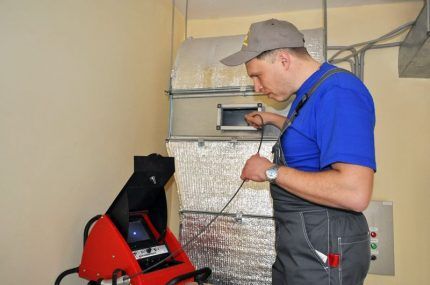
The conclusion of the study of ventilation chambers and air ducts is issued in the form of a sanitary-epidemiological examination report.
Stage #2 - development of a work plan
Based on the report, the second stage of work on cleaning the ventilation is carried out. As a rule, a standard algorithm for developing a plan for further action should be used.
A typical plan consists of the following points:
- Determining the method and method of cleaning the system.
- Selecting a disinfectant.
- Calculation of the required amount of the selected product.
- Selection and preparation for operation of the necessary equipment (including bactericidal equipment installed in the ventilation system, operating on the basis of modern ultraviolet technologies).
- Notifying the building administration (homeowners) about the date of work.
- Dismantling the system.
- Cleaning.
- Disinfection.
- Installation of selected equipment into the system.
- Installation.
- Recording of work and preparation of reporting documentation.
- Subsequent assessment of the effectiveness of the work performed.
Depending on the type of building, its purpose, design features and the degree of contamination of the ventilation system, other elements related to the partial replacement of the system’s components can be added to this plan.
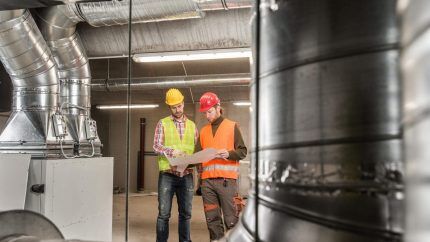
The work plan, after its development, must be signed by the person responsible for carrying out work on cleaning ventilation systems, and approved in accordance with the established procedure by the head of the local administration.
Stage #3 - system cleaning work
Depending on the specific features and design, the entire range of proposed works is performed.
Regardless of the choice of cleaning method, work should be carried out in the following sequence:
- Preparation of cleaning products and disinfectant solutions in specially designated areas.
- Carrying out calculations for the use of the product in each section of the ventilation system. Calculations must be made by a specialist.
- Preparing ventilation, removing covers, grilles, ceilings, dismantling air intake elements. Providing free access to the system.
- Air Duct Cleaning.
- Cleaning control devices - it is not recommended to dismantle them; cleaning should be carried out at the installation site.
- Cleaning and disinfection filters.
- Cleaning fans - if necessary, soft inserts can be removed.
- Cleaning heat exchangers. This is carried out taking into account their design and only when dismantling them from the ventilation system.
- Cleaning the drainage system.In this case, it is worth dismantling the drainage trays.
- Cleaning the inside of the housings of mixing chambers and air conditioners. When disassembling and cleaning household air conditioners, you should follow the instructions supplied with these models.
- Drying and assembly of ventilation system elements.
Thus, when performing work in accordance with this developed sequence, it will be possible to completely clean the system. Deviation from these points is not advisable.
It is worth noting that after the work is completed, a report must be drawn up, which must indicate all the actions performed.

Stage #4 - assessment of the ventilation cleaning performed
The final stage of cleaning ventilation systems is to analyze the effectiveness of the work done with a final conclusion about the safe use of ventilation.
In accordance with established rules, control of the results of work is mandatory at each facility. The effectiveness of cleaning should be carried out not only by visual assessment of the absence of contamination, but also by special laboratory tests. Only a comparison of such a parameter as the “total microbial number,” which is necessarily measured before starting work, will allow one to calculate the degree of residual contamination in the system.
The analysis (sampling of the required amount of air) should be carried out at the point of influx of air masses into the room.
Also, in accordance with the standards, the following surfaces of the system must be examined for the presence of pathogenic elements:
- filters;
- humidifiers;
- cooling towers;
- heat exchangers;
- drainage trays.
After studying the results and comparing the indicators, the effectiveness of the cleaning and disinfection work carried out is assessed. The results must comply with established requirements and sanitary and epidemiological standards.
It is worth noting that these standards are different for each category of enclosed spaces (industrial, residential, public use).
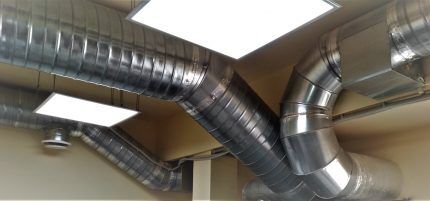
The concept of a “clean ventilation system” corresponds to ventilation where there are no pathogenic bacteria and microorganisms, and visually there is no visible contamination in the entire system.
If laboratory tests do not reveal changes or the improvements are insignificant and do not reach the established standards, a decision will be made to re-clean the ventilation system.
Conclusions and useful video on the topic
General concepts about ventilation systems and the need to keep them clean are shown in this video:
The state pays special attention to the ventilation system of all types of buildings, preventing pollution that could affect the deterioration of people's health.The established timing of inspections and the cleaning procedure allows for timely identification and elimination of contaminants formed during operation. And only strict adherence to these rules will allow the work to be carried out efficiently and the ventilation system to be brought into compliance with sanitary standards.
Do you want to supplement the above information with useful information or clarify a number of nuances? In the special form located below this publication, you can ask our experts questions or share your opinion on the rules and regulations for cleaning ventilation systems.




Good afternoon. What rules and laws describe “who has the right to clean ventilation systems.” If not stated by the rules. Is it possible to clean ventilation systems at an industrial enterprise on your own?
Vitaly, paragraph 50 of the Decree of the Government of the Russian Federation dated
April 25, 2012 N 390 “About
fire safety regime."
Dmitry, paragraph 2.2 ORDER OF THE CENTER OF THE STATE SANITARY AND EPIDEMIOLOGICAL AUTHORIZATION IN MOSCOW DATED AUGUST 12, 2004 No. 107.
Still, I advise you to contact a specialist 😉
Good afternoon Please tell me, as of today (08/26/2020) what is the frequency of cleaning ventilation systems? And in which of the above documents is this stated? And also where these standards apply (interested in Moscow, St. Petersburg and the Leningrad region)
Good day! Interested in the previous 2 questions.
Should a specialized company for cleaning and diagnostics of ventilation ducts have a license to carry out this work???